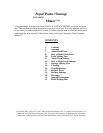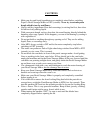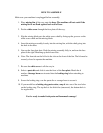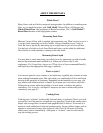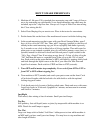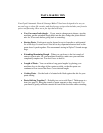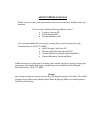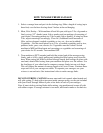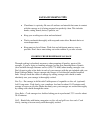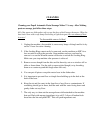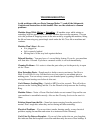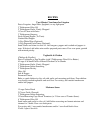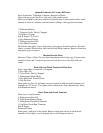
ABOUT FRESH PASTA
Which Flour?
Many flours work well with your pasta/ sausage maker. In addition to semolina pasta
flour, we’ve tested the recipes with Gold Medal™ Bread Flour, All Purpose and
Whole Wheat Flour. Our preference at Ronco Inventions, LLC is Gold Medal™
Bread Flour because of the high gluten content.
Measuring Pasta Flour
Measure 2 cups of flour with a standard glass measuring cup. What’s easier to use is a
1-cup dry flour measuring cup with a handle. Always remember to use 2 cups of
flour. Be sure to tap the dry measuring cup a couple times to get rid of air pockets.
Use the back of a knife to level flour. Herbs and spices can be added for additional
flavor before or while machine is running in the mix mode.
Measuring Pasta Liquid
You may have a round measuring cup with lid or a dry measuring cup with a handle
that has liquid measurements marked on it. Either one of these cups is self-
explanatory. For 2 cups flour, always use 2 Tbsp olive oil (we recommend Bertolli),
and liquid up to the appropriate line (egg is optional).
Water or Juice?
You can use spinach, carrot, tomato or just about any vegetable juice instead of water
when making homemade pasta. Mix and watch your combination of flour and liquid
develop in the pasta bin in 4 minutes. Depending on the humidity in your area, you
may need to add additional flour or liquid. If you pasta mix is too moist, add flour 1
Tablespoon at a time, while the machine is in mix mode, to achieve the perfect
consistency. If it is too dry, add liquid 1 teaspoon at a time to achieve the perfect
consistency (see page 9).
Cooking Pasta
Cooking pasta “al dente” [to the tooth] firm and chewy is preferred. Don’t overcook
your pasta; it will become too soft and not very appealing. Some of the smaller pasta
shapes such as angel hair, vermicelli and spaghetti takes as little as 30-seconds to a
minute to cook (unlike hard, dried out package pasta). Larger, thicker shapes such as
rigatoni or macaroni of course take longer to cook. Cook in 4-6 quarts of boiling
salted water, remove immediately. After pasta is “al dente”, rinse in cold water to
stop the cooking process.



